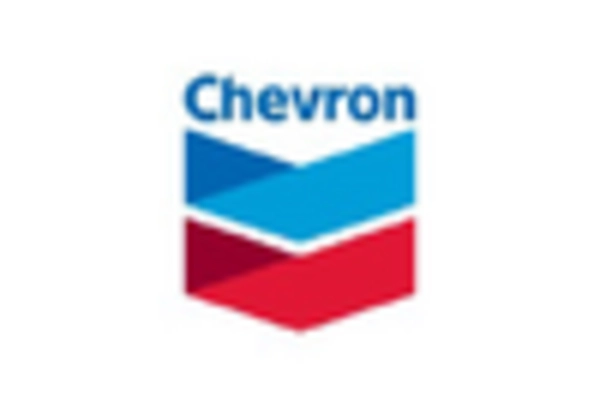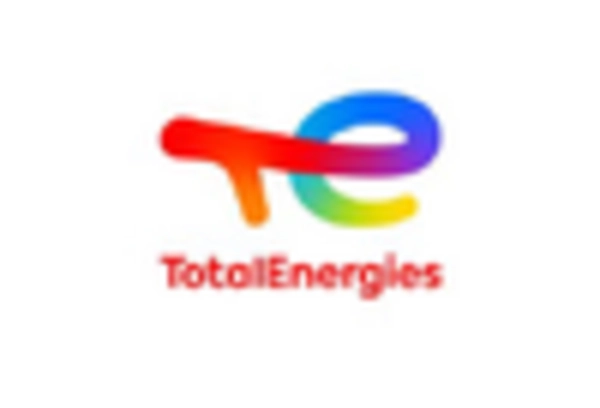Rising Demand for Renewable Energy
The increasing The Lubricants For Wind Turbines Industry. As nations strive to meet sustainability goals, the installation of wind turbines has surged. This trend is reflected in the projected growth of the wind energy sector, which is expected to reach a capacity of over 1,000 GW by 2025. Consequently, the demand for specialized lubricants that can withstand the unique operational conditions of wind turbines is likely to rise. These lubricants are essential for ensuring optimal performance and longevity of turbine components, thereby supporting the overall efficiency of wind energy production.
Growing Awareness of Environmental Impact
The rising awareness of environmental issues is significantly influencing the Lubricants For Wind Turbines Market. As stakeholders become more conscious of the ecological footprint of energy production, there is a growing demand for eco-friendly lubricants. These lubricants are formulated to minimize environmental impact while maintaining high performance standards. The market for bio-based and biodegradable lubricants is anticipated to grow, driven by both consumer preferences and regulatory pressures. This shift towards sustainable lubricants not only aligns with the broader goals of reducing carbon emissions but also enhances the reputation of companies within the wind energy sector, thereby fostering market growth.
Regulatory Support for Wind Energy Initiatives
Regulatory frameworks supporting renewable energy initiatives are a crucial driver for the Lubricants For Wind Turbines Market. Governments worldwide are implementing policies that promote the use of wind energy, including tax incentives and subsidies for wind turbine installations. Such supportive measures are likely to stimulate market growth, as they encourage investments in wind energy infrastructure. For instance, recent regulations in various regions have mandated a shift towards cleaner energy sources, which directly impacts the demand for lubricants tailored for wind turbines. This regulatory environment fosters a favorable landscape for lubricant manufacturers to innovate and expand their product offerings.
Focus on Operational Efficiency and Cost Reduction
The pursuit of operational efficiency and cost reduction in wind energy production is driving the Lubricants For Wind Turbines Market. Wind farm operators are increasingly seeking ways to minimize maintenance costs and enhance the reliability of their turbines. High-quality lubricants play a pivotal role in achieving these objectives by reducing friction and wear, thereby extending the intervals between maintenance activities. As a result, the market for lubricants that can deliver these benefits is expected to expand. Industry reports indicate that the adoption of advanced lubricants can lead to a reduction in maintenance costs by up to 20%, making them an attractive investment for wind energy operators.
Technological Innovations in Lubricant Formulations
Technological advancements in lubricant formulations are significantly influencing the Lubricants For Wind Turbines Market. Innovations such as the development of high-performance synthetic lubricants are enhancing the operational efficiency of wind turbines. These advanced lubricants are designed to provide superior protection against wear and tear, reduce friction, and improve energy efficiency. The market for these innovative lubricants is projected to grow, with estimates suggesting a compound annual growth rate of around 5% through 2025. This growth is driven by the need for more efficient and reliable lubricants that can operate effectively under extreme conditions, thus extending the service life of wind turbine components.


















Leave a Comment